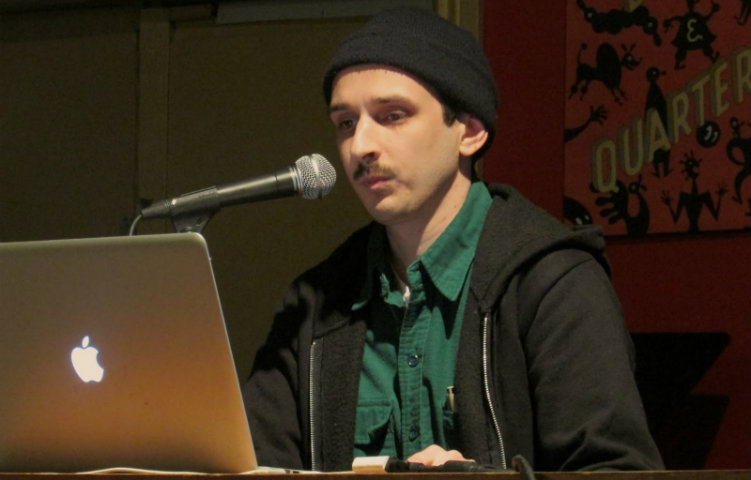Graphic Novel Review | Sabrina by Nick Drnaso
In the first ten panels of Sabrina, we see a woman carefully and silently searching a house until she happily pulls a large grey cat out from beneath a bed. Later, we have two men standing on opposite sides of a door, one with a takeaway bag and the other with a knife, both silent. These quiet scenes are speckled throughout Sabrina and create an atmosphere which consistently left me afraid of what was about to happen.
Sabrina is 29-year-old Nick Drnaso’s second graphic novel, and the first thing you’ll notice is the sterile art style. It’s the same style as that of his debut novel, Beverly, a story which simmered with anxiety and racial tensions. Drnaso’s characters and environments are undetailed, drawn and coloured drably, and often we barely see the characters’ facial features. Some people have told me that the style looks ugly, but I don’t think so. It adds to the subtle, unvarnished plots which Drnaso creates.
Sabrina was the woman looking for the cat, and after she finds it, her sister, Sandra, appears outside her window. The two sit and chat, doing a crossword together, talking about travelling until Sandra tells an unnervingly real story about how she was stalked by three guys: ‘I started walking away and he grabbed my arm. I ran to the street and they got in a car and started following me. I ducked into a taco place and hid in the bathroom for two hours, crying.’

Shortly after this story, a few pages later, Sabrina goes missing. We aren’t told how she goes missing, but simply see her go to bed, wake up, feed her cat, and walk away from her house. That’s it. From there the plot’s focus switches to a wispy blonde man: Sabrina’s boyfriend, Teddy. He’s sitting silently by himself in a train station where he’s reuniting with an old school friend, Calvin, who is supposed to help him get away from his problems.
Calvin is also separated from someone, though this person isn’t missing. Instead, they don’t want to be with him anymore. His ex-wife and daughter have moved to a different city, leaving him in a house with empty rooms and forgotten toys; Drnaso is exceptional at environmental storytelling. We get the impression that Calvin needs somebody in his life to fill the gap left behind: he feeds Teddy, carries him to bed, comforts him when he screams in his sleep, and listens to his pain, angst, and frustration.
Unfortunately, things get worse for them when Sabrina’s disappearance gathers public attention. The case is resolved early on, and we discover what’s happened to Sabrina, but then important case details leak to the public. It’s here that I fully realised the foreshadowing of an earlier scene that mentioned 9/11’s anniversary. Conspiracy theorists who debate the legitimacy of events like 9/11 and the Sandy Hook Massacre, begin to formulate theories around Sabrina’s case. They ambush Calvin outside his house, question his identity, and harass him through emails with death threats.

Personally, I shun conspiracy theories, but when Drnaso pulled me into that world, looking at the inconsistencies in Sabrina’s case, I found myself questioning what exactly happened and if Calvin or Teddy were involved in her disappearance. Ultimately, I wound up feeling guilty for being suspicious of people who are clearly blameless, but I also started to understand part of why some people come up with these theories: a desire to explain an unexplainable tragedy, where someone innocent has suffered for no reason.
Throughout the book we also get glimpses of Sabrina’s sister, Sandra’s life, of her loneliness and how she tries to cope by going to an event where people tell whatever story they want. She’s an interesting character, who seems more resilient than Teddy, but I think her story is neglected. We don’t get to see her enough and this makes this tale—of a woman who went missing—feel too male-focused. I barely recognised Sandra when she appeared towards the end, but her final scene is powerful and harks back to the story she told Sabrina early on.
Sandra’s story of being stalked is what sets up the impending dread felt throughout the novel. I was often afraid that something horrible was about to happen just because of a character looming in the background and would then be surprised when they just moved on or behaved positively. Sabrina builds up our expectations and prejudices and then shows that we can’t always follow them. Despite everything horrible that Teddy, Calvin, and Sandra endure, and how dark and drab their world can seem, this is a hopeful book about friendship, trust, and our need persevere even when we are afraid of being hurt.

